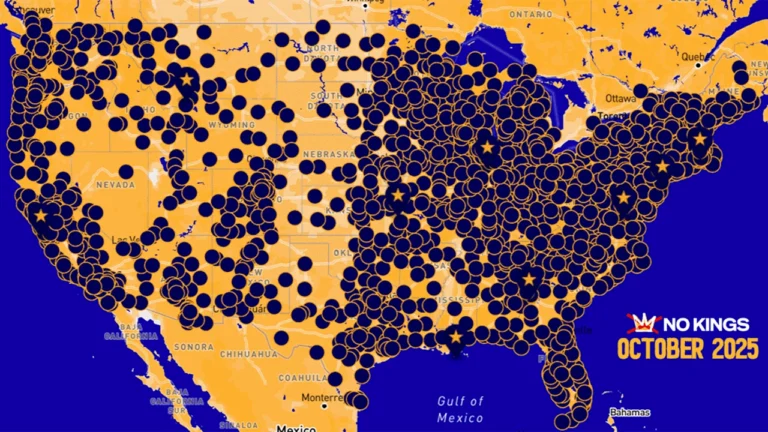Prior to becoming the CEO of Lyft, David Risher didn’t post much on social media.
That began to change just before his first day on the job, when Risher decided to sign up on the ride sharing platform as a driver.
“I had no plan,” he says. “I just wanted to get in the car and see what it feels like to drive for Lyft and hear the rider’s story, but also experience it from a driver’s perspective.” At the end of that first outing, Risher revealed to the passenger who he was, and requested a selfie. He posted it on his personal LinkedIn account. “I drove for a couple more hours — and I didn’t tell anyone at Lyft I was doing this.”
Since then, Risher has made a regular habit of getting behind the wheel and sharing the stories (and selfies) he gathers from the road on his personal LinkedIn and X accounts, which have since added about 25,000 followers.
“Part of a CEO’s job is to be an external spokesperson for the company. The thing that I get the most consistent positive feedback on is my social media posts, particularly around driving, or pulling back the curtain on what it’s really like to run a company,” Risher says.
“People trust individuals more than they trust institutions… so I think it is important for Lyft. I kind of just want people to know CEOs are just people.”
As the personal brand of CEOs becomes increasingly tied to the brand of the companies they lead — their voice, their interests, their faces — more and more top bosses are taking pages out of the books of influencers. But is the expectation to whip out a phone and lead a TikTok Live changing the way these leaders function, and is it too much for a role that’s already all-consuming?
In this paid Premium story, you’ll:
- Learn what’s driving this new expectation for chief executives
- Hear more from Lyft CEO David Risher
- The risk of turning your CEO into an influencer
The age of the “Chief Promotional Officer”
Risher isn’t the only chief executive blurring the lines between business leader and social media influencer. According to author, personal branding expert and the founder and president of Sterling Marketing Group, Karen Leland, CEOs are under increased pressure to have an active online presence.
“People don’t just look at the company, they look at the brand of the CEO and the executives. They want to know how that person is putting themselves out there,” she says. “The CEO becomes almost like the chief promotional officer.”
Not only are potential customers interested in the CEO’s online presence, according to Leland — who has helped hundreds of Fortune 500 and Inc. 1,000 CEOs develop their online personas — but so are prospective employees and investors.
In a 2020 survey of global executives, 59% said their CEOs should have an online presence. In another, 74% of employees said customers associate their company with its executives. Other studies suggest that a positive CEO reputation can significantly improve an organization’s ability to attract and retain investors, and can even positively impact their market value.
To some degree, this isn’t a novel idea. CEOs have been the faces of organizations for decades. But recently, stakeholders are expecting more, encouraging business leaders to fashion an “authentic” persona to connect with audiences the same way influencers do on YouTube, TikTok or Instagram.
“CEO branding as a discipline is fairly new,” says Leland. “Only in the last couple of years has it really gained traction.”
Leland even says it’s now common for CEOs to work with publicists to develop a personal narrative that is relevant to but distinct from the brand they represent. That could, for example, take the form of thought leadership, advocating for causes they care about, behind-the-scenes perspectives, and even personal interests and hobbies.
Sir Richard Branson, for example, has long maintained a public persona closely connected to, but still distinct from, that of his companies, making frequent media appearances and posting on social media. Though Branson used to be the outlier his strategy has recently become the norm.
Like Risher, many tech CEOs in particular have jumped on the branding bandwagon. As he transitioned from the COO of Shopify to CEO of Opendoor, Kaz Nejatian began posting on social media, sharing internal memos, and building his brand online. CEOs like Bumble’s Whitney Wolfe Herd, Microsoft’s Satya Nadella, JPMorgan Chase’s Jamie Dimon, Cisco’s Chuck Robbins, Best Buy’s Corie Barry, and many more have follower counts in the hundreds of thousands, or millions.
CEOs as attention merchants?
It may be inaccurate to group CEOs in the same camp as YouTubers or Twitch streamers, though. “Influencers aren’t necessarily thought leaders,” Leland says. But “CEOs who do this right are establishing themselves as thought leaders in a particular domain.”
Recent media or conference appearances, product announcements, site visits, conversations with customers and employees, and other day-to-day responsibilities have all become fodder for a CEO’s online content. “I think today, it is a core responsibility,” says Leland. If a CEO makes a lengthy, thought leadership-style post on LinkedIn that goes viral, it’s a huge branding opportunity for their company.
But while there may be benefits to a strong social media presence for some CEOs, others may have more to lose than gain from the added visibility. Just as influencers get “canceled” for posting bad takes or faux pas online, so could more CEOs (and thus companies) who are following this influencer-ization model.
“There is this concomitant risk that goes along with it,” says Jerry Colonna, an executive coach, author, and CEO of Reboot.IO. “If they make a personal misstep, which every human being does, it’s not just the person who’s canceled — it’s the brand.”
Colonna explains most people couldn’t name the CEOs of most Fortune 100 companies, often because well-established organizations have the luxury of letting their products speak for themselves. At the same time, he says others — Apple, Microsoft or Patagonia — were more successful because of the public personas of their leaders than they could have been otherwise.
“As long as you’re doing it in an authentic way, then you’re probably doing good for your company,” says Risher of Lyft. “I think this is true for social media influence as well as for CEOs: if it feels forced, I don’t think you’re fooling anyone.”
While he has seen the pressure on CEOs to be more present on social media growing in recent years, Colonna — who has gained a reputation as “The CEO Whisperer” for coaching countless prominent business leaders — says the impact of their online presence has its limits.
“It can be really, really helpful, but it doesn’t solve the long term, ‘build-the-business’ problem,” he says.
Because no matter how many likes and subscribes your CEO drives: “You still have to deliver high quality products.”






